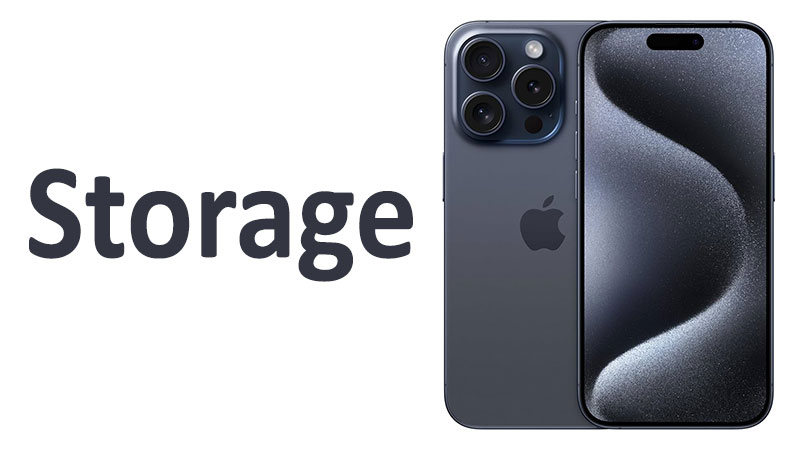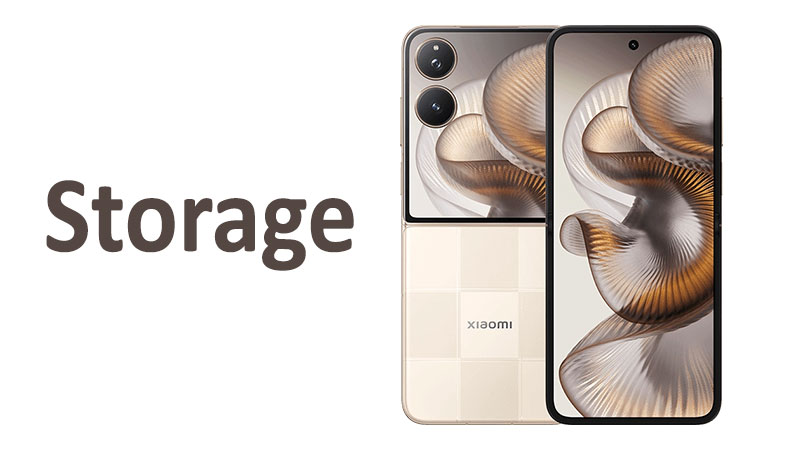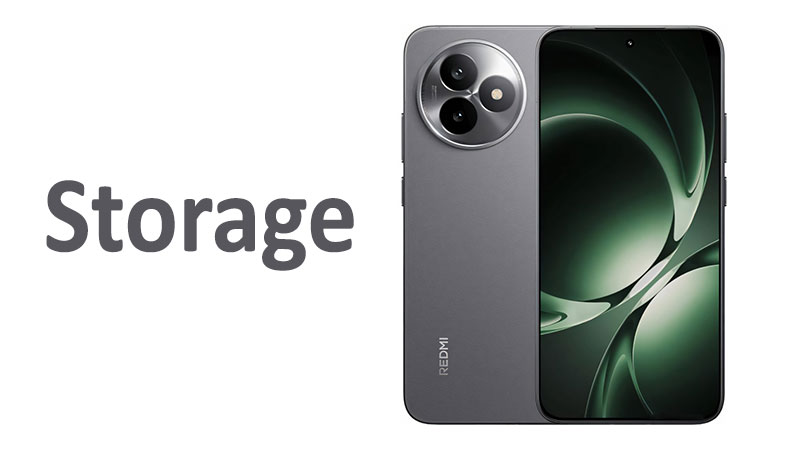The Apple iPhone 15 Pro storage system is perhaps the most critical component for its target audience: professional content creators and power users. Choosing the right memory configuration is essential for maximizing the Pro model’s extensive capabilities, particularly its advanced camera features. The iPhone 15 Pro series offers an unparalleled blend of proprietary NVMe speed and high RAM capacity. This integration is designed to handle demanding tasks like ProRes video editing and console-level gaming. This in-depth article provides a comprehensive analysis of the iPhone 15 Pro storage tiers, the underlying NVMe and RAM technology, and an indispensable buyer’s guide. We aim to equip you with all the details necessary to make an informed, future-proof purchase.
Configuration Breakdown: Storage and High-Capacity RAM
The iPhone 15 Pro is engineered for peak mobile performance. Its storage configurations reflect this professional focus. Unlike the base models, the Pro series receives an upgrade in system memory (RAM). This larger capacity is vital for sustaining heavy, continuous workloads.
The Four Storage Tiers of the iPhone 15 Pro
The iPhone 15 Pro offers four distinct storage capacity tiers. This expanded range, including the top-tier 1TB model, addresses the massive file sizes generated by the Pro camera system. Every capacity option is paired with a standardized 8GB of RAM.
The configurations available are:
- 128GB Internal Storage with 8GB RAM
- 256GB Internal Storage with 8GB RAM
- 512GB Internal Storage with 8GB RAM
- 1TB Internal Storage with 8GB RAM
The standardization of 8GB of RAM is a key differentiator. It ensures that the phone’s ability to multitask and manage large projects is consistent across all price points. This consistency means performance bottlenecks are highly unlikely due to insufficient system memory. The choice between these tiers comes down strictly to capacity needs.
The Power of 8GB RAM in a Pro Context
The iPhone 15 Pro features 8GB of high-speed LPDDR5 RAM. This is a significant bump from the 6GB found in the standard iPhone 15 models. This memory is the phone’s short-term workspace. It enables seamless operation during intensive, professional-grade tasks.
The additional 2GB of RAM is particularly beneficial for professionals. It allows the phone to keep more large applications loaded in memory. For instance, you can switch instantly between the camera app, a video editor like DaVinci Resolve, and a reference browser. This increased RAM capacity is crucial for handling the immense processing demands of ProRes video and the massive textures used in modern mobile games. It solidifies the iPhone 15 Pro’s status as a true mobile workstation.
Specialized Comparison: iPhone 15 Pro RAM vs. iPhone 14 Pro
The upgrade to 8GB of RAM in the iPhone 15 Pro is an important evolutionary step. The iPhone 14 Pro models typically used 6GB of RAM. While 6GB was sufficient, the jump to 8GB provides meaningful future-proofing. It accommodates the escalating demands of new iOS features and larger apps.
This extra memory directly benefits tasks like handling multiple layers in photo editing or keeping dozens of browser tabs active. Users upgrading from the iPhone 14 Pro will notice smoother, more persistent background activity. This enhancement contributes directly to the Pro model’s promise of enhanced multitasking capabilities.
Technical Deep Dive: NVMe and Pro Performance
The iPhone 15 Pro uses proprietary NVMe (Non-Volatile Memory express) flash storage. This technology is responsible for the phone’s incredible read and write speeds. These speeds are non-negotiable for professional workflows. They ensure that data moves quickly enough to support the device’s advanced camera system.
NVMe Storage: The Engine of Speed
NVMe storage is essentially a custom-engineered solid-state drive (SSD). It connects directly to the A17 Bionic processor via the high-speed PCIe interface. This direct connection minimizes latency. Latency is the delay before data transfer begins. Low latency is crucial for maintaining a responsive user interface under heavy load.
High-speed NVMe flash memory is essential for tasks unique to the Pro model. For example, the phone writes massive files when recording 4K ProRes video at 60 frames per second. The NVMe system handles this extreme data flow without dropping frames. This reliability in high-throughput data management is a cornerstone of the Pro experience.
Pro-Specific Storage Requirements: ProRes and Log Recording
The iPhone 15 Pro introduced capabilities that put unprecedented demands on internal storage. Features like ProRes video recording create significantly larger files than standard formats. For example, one minute of 4K ProRes 422 HQ footage can consume several gigabytes of storage.
Furthermore, the option to record in Log format provides maximum flexibility for color grading. However, this also increases file complexity and size. The NVMe speed ensures that the recording process never stalls, even at the highest quality settings. This guarantees that professional capture integrity is maintained. The storage system must be fast enough to keep up with the data pipeline established by the advanced camera hardware.
Comparison: NVMe Speeds and Pro Model Differentiation
While all iPhone 15 models use NVMe, the Pro models often exhibit optimized speeds. Apple may use more advanced, higher-density NAND flash modules in the Pro series. These modules offer improved performance, particularly in sustained write operations.
Furthermore, there is a known phenomenon where smaller-capacity SSDs can perform slightly slower than their larger counterparts. This is due to fewer active parallel flash chips. Therefore, the 1TB and 512GB iPhone 15 Pro models generally deliver superior sustained write speeds compared to the 128GB model. This distinction is vital for professionals who record long clips of high-bitrate video. They require consistent, maximum throughput.
Capacity Deep Dive: Choosing Your Pro Storage Tier
For the iPhone 15 Pro buyer, selecting a capacity is less about cost savings and more about workflow security. The correct choice ensures seamless integration with professional production requirements.
128GB: The Base-Line for Cloud-Heavy Pros
The 128GB option is the lowest-cost entry point into the iPhone 15 Pro line. However, it presents significant limitations for the professional user.
Pros and Cons of 128GB
Pros:
- It offers the lowest price for accessing the powerful A17 Bionic chip and 8GB RAM.
- It works well for professionals who exclusively offload footage via external SSD immediately after shooting.
- The internal NVMe speed is still very fast for casual use and quick data transfer.
Cons:
- High-quality ProRes video recording is often disabled or restricted on this capacity.
- The space fills almost instantly with a few minutes of high-bitrate footage.
- It offers insufficient capacity for serious mobile gaming or a large local media library.
Ideal User Profile for 128GB
This model is only suitable for the most disciplined, cloud-dependent professional. This user shoots in short bursts and immediately transfers all files to external storage. They cannot afford to keep any footage locally. It is also an option for those who simply want the Pro features for gaming and general use, but not for serious content creation.
256GB: The Practical Starting Point for Creators
The 256GB model is widely considered the true starting point for any serious content creator purchasing an iPhone 15 Pro. It provides a necessary buffer for managing multiple projects.
Pros and Cons of 256GB
Pros:
- It provides a generous buffer for local project files and a respectable media library.
- This capacity typically enables unrestricted ProRes video recording capabilities.
- It offers a good balance between cost and functional storage for a professional tool.
Cons:
- Heavy daily 4K/60fps recording will still necessitate regular data management.
- The price jump from 128GB is a significant investment.
Ideal User Profile for 256GB
This configuration is ideal for the enthusiastic content creator, the advanced mobile gamer, and the heavy user. This person records several hours of video per week. They may use the phone for primary editing before offloading. They need to keep several large games and apps installed. This capacity minimizes the frequency of storage-related issues.
512GB: The Safe Middle Ground and Future-Proof Choice
The 512GB capacity offers the most secure balance against data inflation and unexpected storage demands. It is highly recommended for users who do not want to worry about managing their phone storage actively.
Pros and Cons of 512GB
Pros:
- It provides massive overhead for all current and future app and media sizes.
- The sustained write performance is typically better than the lower tiers, favoring long-form video.
- It future-proofs the device for four or more years of heavy use.
Cons:
- The initial purchase price is substantial.
- Many casual Pro users might not fully utilize the entire capacity.
Ideal User Profile for 512GB
The 512GB iPhone 15 Pro is best for the confident power user and serious mobile producer. This includes users who shoot multi-day projects and store large asset libraries locally. They are digital maximalists who value convenience and guaranteed capacity over budget savings. This choice provides true peace of mind.
1TB: The Ultimate Professional Archive
The 1TB model is the largest capacity available for the iPhone 15 Pro. It is specifically designed for the professional filmmaker or digital archivist. This capacity turns the phone into a dedicated portable video recording and editing station.
Pros and Cons of 1TB
Pros:
- It offers truly immense storage, essential for long-form, high-bitrate video projects.
- This capacity is the ultimate long-term investment against increasing file sizes.
- It allows the phone to archive massive media and app libraries without external dependence.
Cons:
- It carries the highest price premium, making it a specialty investment.
- This tier is excessive for anyone who is not an actively working professional filmmaker.
Ideal User Profile for 1TB
The 1TB iPhone 15 Pro targets the niche professional user. This person treats the phone as a primary camera on set. They need to capture hours of 4K ProRes or Log footage without pause. They might also store a large portion of their professional media portfolio locally. This is a tool for the highest-end mobile production demands.
The Fixed Storage Constraint and Buyer Considerations
The iPhone 15 Pro, consistent with Apple’s design philosophy, does not include a removable card slot. This absence elevates the importance of the initial purchase decision. It makes careful planning essential for this professional-grade device.
No Card Slot: The Non-Expandable Reality
The iPhone 15 Pro does not feature a microSD card slot. This means the internal NVMe storage you choose is fixed and permanent. Buyers cannot cheaply add capacity later. This is a key contrast with many competing Android flagships.
While external recording via the USB-C port is now possible, that data does not live on the phone. It resides on an external SSD. For many workflows, having sufficient internal storage for working files and system functions is still necessary. Buyers must factor in data growth and pro feature usage when making the final capacity selection.
External SSD Support: A Pro Workflow Game-Changer
A major feature of the iPhone 15 Pro is its support for external SSD recording. The USB-C port allows you to connect an external drive and record high-bitrate video directly to it. This effectively bypasses the internal storage capacity limit for video production.
However, the phone still uses its internal NVMe for system caching and background processing. Therefore, even with external recording, a reasonable amount of internal storage (like 256GB or 512GB) is highly recommended. It maintains system stability and allows for local capture when an external drive is not connected. This feature is a powerful professional tool, but it does not make internal storage obsolete.
Financial and Workflow Analysis
The capacity upgrade costs on the iPhone 15 Pro are significant. However, the price premium for the 512GB or 1TB models should be viewed as an investment. This investment secures professional workflow integrity. A filmmaker cannot afford to have a shoot halted because of a “storage full” error.
The cost is justified by three factors. First, the 8GB RAM ensures better multitasking. Second, the higher-capacity NVMe often delivers superior sustained write performance. Third, the capacity provides guaranteed, high-speed space for the entire lifespan of the device. For the Pro user, the higher cost offers reliable, long-term functionality.
Pros and Cons of the iPhone 15 Pro Storage
The storage architecture of the iPhone 15 Pro represents an engineering triumph. It also presents specific limitations inherent to its fixed design.
Advantages of the Pro Storage System
The combined 8GB RAM and advanced NVMe offer distinct performance benefits.
- Peak Performance: The NVMe interface delivers industry-leading low latency and high data transfer speeds for smooth operation.
- Enhanced Multitasking: The 8GB RAM handles the most intensive mobile applications and background processes with ease.
- Pro Feature Support: The storage system is optimized to reliably support high-bitrate, large-file features like ProRes and Log video.
- External Recording: The tight integration with the USB-C port enables direct recording to external SSDs, effectively bypassing internal limits.
Disadvantages and Trade-offs
The non-expandable nature of the storage is the main drawback for all buyers.
- High Initial Investment: The price premiums for the 512GB and 1TB capacities are substantial, requiring a large initial outlay.
- Fixed Limit: The storage capacity is permanently fixed. There is no option for cheap, future expansion.
- 128GB Limitations: The smallest capacity is functionally limited for professional use, often restricting the highest quality video features.
Important Takeaways for Pro Buyers
Before purchasing the iPhone 15 Pro, prospective owners must internalize these key points.
- 8GB RAM is Universal: You get the same peak multitasking performance regardless of your capacity choice. The memory is not a bottleneck.
- 256GB is the Real Start: If you plan to use any Pro camera features seriously, consider 256GB the minimum viable starting point.
- Speed is King: You are paying for the speed and integration of NVMe. No external storage solution can match the reliability of the internal memory for system functions.
- External Drive is Key: If you choose 256GB, plan to budget for an external SSD. This is essential for long-form video projects.
Conclusion
The Apple iPhone 15 Pro storage system is built to support the most demanding mobile workloads. The combination of high-speed NVMe flash and 8GB of RAM creates an exceptional platform for content creation and high-end gaming. The capacity tiers, ranging from 128GB to 1TB, cater to different levels of professional necessity.
For the average Pro consumer, the 256GB or 512GB model offers the best value and long-term convenience. The 1TB option is a specialty investment for professional filmmakers needing an ultimate portable archive. Although the storage is fixed and expensive to upgrade, the underlying NVMe technology provides unparalleled speed and reliability. By understanding your specific workflow—especially your video recording habits—you can select the ideal iPhone 15 Pro storage capacity. This ensures your powerful device remains a bottleneck-free production tool for years to come.
FAQ
Does the iPhone 15 Pro support storage expansion via a memory card?
No, the iPhone 15 Pro does not have a slot for a microSD card or any other form of removable memory.
What are the available storage capacities for the iPhone 15 Pro?
The available storage capacities are 128GB, 256GB, 512GB, and 1TB.
How much RAM does the iPhone 15 Pro include?
The iPhone 15 Pro includes 8GB of LPDDR5 RAM across all of its storage configurations, from 128GB up to 1TB.
What is the advantage of using NVMe storage in the iPhone 15 Pro?
The NVMe storage provides extremely fast data read and write speeds. This is essential for quickly processing large files like ProRes video and ensuring a fluid, low-latency operating system experience.
Can I record 4K ProRes video to an external drive on the iPhone 15 Pro?
Yes, the iPhone 15 Pro’s USB-C port allows you to connect an external SSD and record high-bitrate video formats like 4K ProRes directly to the drive.



